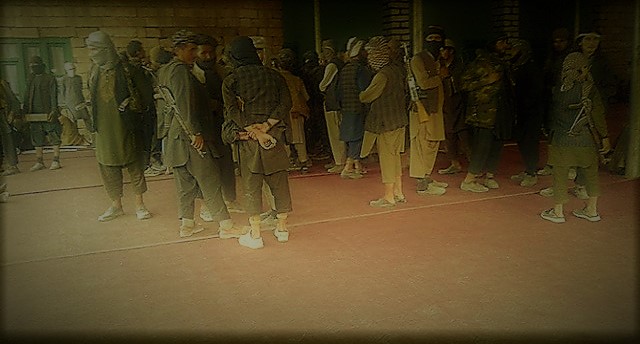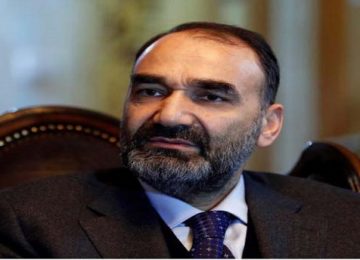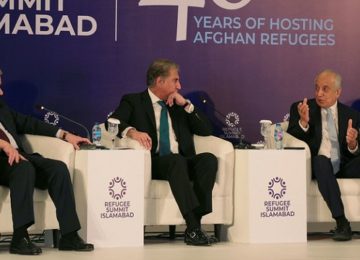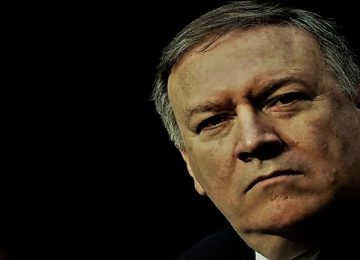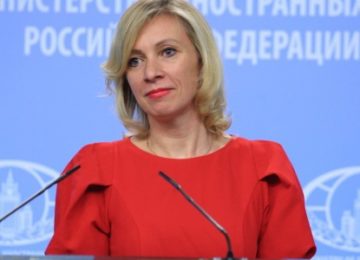The Taleban have eliminated the self-proclaimed Islamic State Khorasan Province (ISKP) group that had been holding an enclave of territory in the isolated districts of Qush Tepa and Darzab in Jawzjan province for the last three years. It was the only ISKP-aligned group with territorial control outside the east of Afghanistan. The group failed to withstand a concerted, month-long offensive by the Taleban. In the end in an unexpected turn of events, reports AAN’s Obaid Ali (with input from Thomas Ruttig), most of their remaining fighters and leaders were rescued by the government. It has yet to say why it did this.
For the past three years, Qush Tepa and Darzab districts have been strongholds for fighters claiming affiliation with ISKP (also known as Daesh in Afghanistan). Their original leader was Qari Hekmat, a disgruntled Taleban commander from Darzab who took his fighters over to ISKP in 2015 (read AAN analysis here and here). In this dispatch, we describe the group as ‘self-proclaimed ISKP’, rather than just ‘ISKP’ because we have found no solid evidence to claim the group had connection with ISKP in Nangarhar province. The ISKP there is recognised by ‘Daesh central’ in Syria and Iraq as a branch.
Qari Hekmat’s fighters were largely Uzbek and Tajik, with a small number of Pashtuns and some foreign (Central Asian) fighters. In February 2017, his group killed six staff members of the International Committee of the Red Cross (ICRC) and kidnapped two others (read media report here). Qari Hekmat led the group for more than two years, before being killed by a United States airstrike in April 2018. The group then appointed Mawlawi Habib Rahman as his successor. Habib Rahman is originally from Sholgara district of Balkh province and joined Qari Hekmat’s group in 2016 (read AAN analysis here). In terms of territorial control, the government has continued to ‘hold’ both district centres, although, according to locals in Darzab, the district governor had been absent since June this year and the police chief was holed up in a local ANP base. The Taleban hold the districts surrounding the enclave.
Previous Taleban attempts to deal with the group
The dissident insurgent group had been a thorn in the Taleban’s side since it emerged in 2015. Local Uzbek Taleban made a few attempts, in 2016 and 2017, to negotiate a peaceful settlement; they wanted to avoid fighting their fellow Uzbeks. These efforts failed to convince the group to re-join the Taleban. Both Taleban and ISKP accused each other of being ‘puppets of the foreigners’.
Most recently, at the start of July, the newly-appointed Taleban shadow governor for Faryab, Mawlawi Abdul Rahman, who is a prominent Uzbek Taleban figure, sent a written message to Mawlawi Habib Rahman, again asking him to lay down his weapons and surrender (read more background details on Mawlawi Abdul Rahman here). If he did not, Mawlawi Abdul Rahman warned, there would be serious consequences. His offer was rejected and Mawlawi Habib Rahman instead threatened to eliminate the Taleban in Jawzjan province. This rejection paved the way for an escalation of fighting between the two insurgent groups.
The Taleban have also tried to clear the group out of its strongholds by force. In December 2017 and again, in January 2018, they launched major offensives, but failed to oust them (read AAN’s previous analysis on Taleban attacks against ‘ISKP’ fighters here). This time, the offensive was much more massive.
Details of the battle
At the beginning of July, after the self-proclaimed ISKP leader’s refused to surrender, the Taleban began a new offensive to oust the ‘ISKP’ fighters from Qush Tepa and Darzab that lasted for about a month. The leadership tasked Sheikh Matiullah, their newly appointed commander for the northwest zone, and Mawlawi Abdul Rahman, Taleban shadow governor for Faryab to lead the offensives. They were joined by the shadow provisional governors for Faryab, Jawzjan and Sar-e Pul provinces.
Taleban operations started simultaneously from the south and west. From the south, two local commanders from Sayad district of Sar-e Pul province, Sher Muhammad Ghazanfar and Mullah Nader, launched an offensive from Belcheragh district of Faryab province and Sayad district of Sar-e Pul, targeting the self-proclaimed ISKP in its main local base, the Sar Dara area of Darzab.
From the west, Taleban fighters moved in from Khwaja Sabz Push and Shirin Tagab districts of Faryab, targeting the self-proclaimed ISKP fighters in Qush Tepa district. This front was led by Mawlawi Abdul Rahman, the Taleban’s shadow governor for Faryab and Mawlawi Suntullah, their shadow governor for Jawzjan. Aminullah Amin, the government’s district governor for Qush Tepa, confirmed the Taleban’s large-scale offensives and said Taleban from neighbouring provinces, Faryab, Sar-e Pul and Ghor, had been mobilised for the fight. Further, he told AAN that Taleban had been using Humvee vehicles and heavy weapons.
In Qush Tepa, the fight lasted just two weeks, with, local sources said, serious casualties on both sides. The self-proclaimed ISKP group lost strong positions in Khanaqa, Beg Sar and Chakhma Chaqur villages. Both of its leading local field commanders were also killed. One was Haji Murad, a local Uzbek from Beg Sar village with 200 fighters under his command who had been appointed deputy leader of the group in Jawzjan and put in charge of Qush Tepa district in 2018. He was reportedly killed on 23 July. The other was Commander Zaid, head of the self-proclaimed ISKP’s ‘police unit’. The deaths of these two prominent field commanders demoralised their fighters.
From the south, the Taleban also exerted serious pressure on the self-proclaimed ISKP’s positions in Darzab. The group had strongholds in at least three locations there: Sar Dara, Moghul and Bibi Maryam areas. Multiple sources close to the Taleban told AAN that fighters loyal to these groups planted roadside mines around Sar Dara and Moghul areas of Darzab to protect their positions. This meant the Taleban victory took longer. Local government officials confirmed that fighting had been intense in the district. Speaking to AAN, district police chief for Darzab Muhammad Ismail said the Afghan security forces were not involved in the fight, but stayed in the district centre.
There were earlier reports, however, in April in Afghan media (here and here) of Afghan National Army (ANA) airstrikes and “Afghan and U.S. special operations coupled with U.S. airstrikes” to “decimate the heart of IS-K in Darzab.” This followed the death of Qari Hekmat on 5 April 2018, also as the result of an airstrike.
Not an easy victory
Qari Hekmat’s group inflicted serious casualties on the Taleban, including killing a number of field commanders. On 17 July, two ‘ISKP’ fighters pretended to be Taleban fighters and took part in a Taleb commander’s funeral. They then opened fire inside the dead commander’s house where dozens of Taleban fighters were gathered. As a result, 15 Taleban, including Nur Muhammad and Haji Rahim, both field commanders, and family members of Sher Muhammad Ghazanfar, the Taleban shadow district governor for Sayad district of Sar-e Pul, were killed. A statement released on the Taleban’s official website said 17 Taleban fighters had been killed and 13 wounded. It claimed 153 ISKP fighters were killed, 100 were wounded and 134 ISKP fighters captured. Local sources, however, thought Taleban casualties were far larger. Speaking to AAN, local elders in Darzab said they thought around 100 Taleban fighters had been killed, with dozens more wounded. Initial reports that Ghazanfar himself was among the killed turned out to be incorrect.
Despite inflicting heavy losses, the self-proclaimed ISKP group could not resist the large number of Taleban and the onslaught coming from two directions. The Taleban also enjoyed reinforcements, which the dissident insurgents did not, and managed to retain control over logistics and supply routes, preventing any supplies reaching their enemy.
Surrender
On 1 August 2018, the self-proclaimed ISKP group was ousted from its last positions. In the face of certain defeat by the Taleban, its remaining fighters and leaders were left with only one option and that was surrender: the choice, then, was should it be to the Taleban or the government. The group contacted the Taleban seeking a ceasefire. By this point, however, it was too late to be acceptable. The Taleban’s response was to demand that the fighters hand over their leaders, Mawlawi Habib Rahman, head of the group, Mufti Nematullah Qawim, his deputy and Mullah Suhbatullah, head of finance, before any ceasefire could be agreed. The fighters then split; some preferred to surrender to the Taleban, while others reached out to the government.
Those who feared Taleban punishment for rejecting their earlier call for a peaceful settlement made overtures to the government. According to the head of the Provincial High Peace Council, Mawlawi Akram, some individuals expressed their willingness to “join the peace process.” There was, however, he said, “limited access to escape routes.” Eventually, the group’s leaders reached out directly to the government, seeking protection from the Taleban.
According to Haji Assadullah, a tribal elder in Darzab, Afghan commandos arrived by helicopter late in the night of 31 July and opened an escape route over land for the group. The ‘ISKP’ fighters walked from Mughol village to Darzab district centre, which takes about 20 minutes. From there, they were evacuated by Afghan National Security Force flights to Sheberghan.
Assadullah said that Mawlawi Habib Rahman, Mufti Nematullah, Mullah Suhbatullah and Hussain Qahraman, head of the military unit of the group, along with 200 fighters, were rescued in this way. After surrendering to the government and safely arriving in Sheberghan city, Habib Rahman told media outlets that he was tired of war and had therefore joined the Afghan government’s peace process. “If the government wants, I can work within the government structure,” he said. “Otherwise I start an ordinary live like an ordinary person” (see the interview here). He made no mention of having been driven to surrender by the Taleban’s offensive. Photos posted on social media and, as Tolonews reported, by the local ANA corps (see here) showed Darzab district governor Zabihullah and police chief Ismail Topchi standing with a relaxed Habib Rahman talking on the phone. Both government officials are Uzbeks and belong to Vice President Abdul Rashid Dostum’s Jombesh party, and it can be assumed that the shared ethnic background helped in the surrender.
Local government officials in Jawzjan confirmed the surrender of 230 ISKP fighters – among whome appear to be many minors (see photo here) –, but did not explain why they had accepted them. Provincial governor Lutfullah Azizi told media, “Those who committed crimes will be prosecuted based on the Afghan law and those who were not involved in crime will be freed, based on the Afghan government’s general amnesty policy.”
This will be an interesting case of whether the so-called ‘amnesty law’, which gives a blanket amnesty for all those who reconcile, no matter what crimes or atrocities they have committed, will be implemented. The ‘amnesty law’ is anyway controversial because it marginalises victims, overlooking their right to justice, and because amnesties for war crimes and gross human rights violations are no longer considered legal under international law. (For more detail on the law, see AAN analysis here.) In this case, given that the self-proclaimed ISKP fighters and leaders were forced to surrender, rather than willingly leaving the insurgency, it would be especially strange if the government did grant amnesties. In particular, it will be worth watching to see if the matter of the murder and kidnap of the ICRC staff will be addressed – or overlooked. There have also been accusations of more recent war crimes and demands by local civilians for justice. At the end of July, the media quoted several local women accusing ‘ISKP fighters’ of abducting and raping girls (see here). The New York Times also reported on 1 August that Darzab residents had traveled to the provincial capital, Sheberghan, “to petition the governor to punish the Islamic State prisoners for the crimes they committed while in control of their area, according to local officials.”
Meanwhile, other members of the group, mostly Central Asian fighters, who had contacted the Taleban prior to the Afghan commandos’ arrival, surrendered to the Taleban. According to sources close to the Taleban, 19 Central Asian fighters in Darzab district surrendered and were evacuated, along with their families, to Kohistanat district of Sar-e Pul province.
The Taleban proclaimed victory on 1 August: “During the fight, all areas in Darzab district were cleared from the seditious group of ISKP.” The statement praised the northern fighters for demolishing the ISKP group despite what it said were severe challenges.
Conclusion
Over the past few years, the Taleban have been pushing to expand territorial control in the northern and eastern parts of Jawzjan province, as well as in the strategic areas around the provincial centre. They did not have a strong presence in Qush Tepa or Darzab and neither did the government. Into this power vacuum, came the self-proclaimed ISKP group. The government has carried out no full-scale offensive against the group, despite repeatedly flagging the presence of alleged ISKP and foreign fighters there. Government inaction helped the late Qari Hekmat and his successor to recruit fighters against the Taleban and survive for three years. Neither its long inaction or its decision, in the end, to take action to rescue the remnants of the group have been explained.
The Jawzjan group remained isolated. It failed to establish any strong operational connection with the ISKP in Nangarhar province. Neither its existence, therefore, nor its defeat will affect the ISKP in its Nangarhar strongholds.
However, in Jawzjan, the defeat of the ‘ISKP group’ has made the Taleban the dominant power in Darzab and Qush Tepa again. The way the only visible, self-proclaimed ISKP group outside the Afghan east was eventually wiped out may also be viewed as a lesson by other disgruntled Taleban or potential dissident insurgents in the north. It may make them think again about opposing the Taleban.
By Special Arrangement with AAN. Original link.
Disclaimer: Views expressed on this blog are not necessarily endorsed or supported by the Center for Research and Security Studies, Islamabad.



